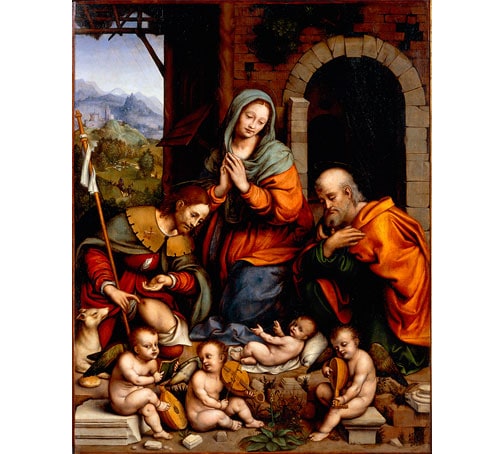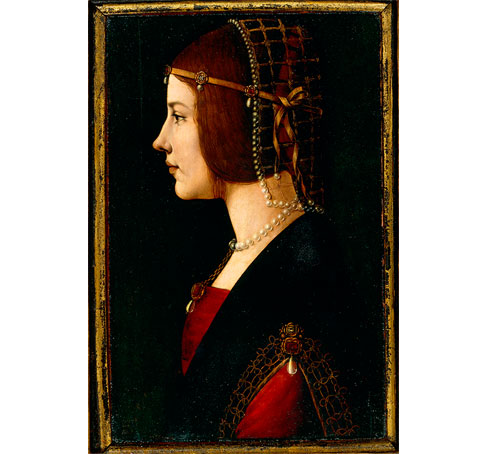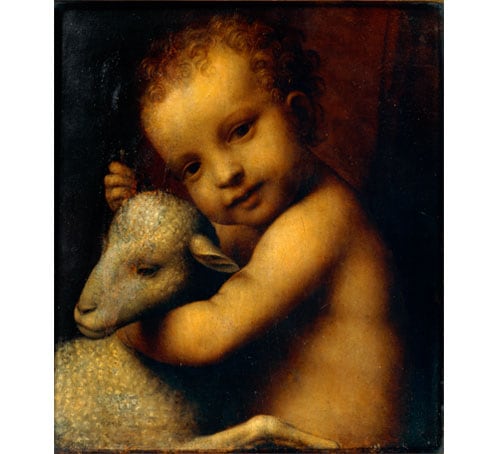Leonardo da Vinci is undoubtedly one of the most celebrated and well-known painters of all time. Grounded in traditional practice, he was able to transform his methods and materials to express unprecedented intellectual and artistic concerns. For da Vinci, the creation of works of art was not just a profession, but also an expression of a larger pursuit to observe and understand nature. It was through this approach that he revolutionised painting.
His mastery of painting ensured he had a strong following of pupils who continued his artistic legacy. They became known as the School of da Vinci. Original masterpieces by the School of da Vinci are presented in this exhibition for the first time in Southeast Asia. These paintings, some of the most well-known works of the Renaissance, are reproductions of some of Leonardo Da Vinci's most important works.
His mastery of painting ensured he had a strong following of pupils who continued his artistic legacy. They became known as the School of da Vinci. Original masterpieces by the School of da Vinci are presented in this exhibition for the first time in Southeast Asia. These paintings, some of the most well-known works of the Renaissance, are reproductions of some of Leonardo Da Vinci's most important works.
- MASTERPIECES BY THE SCHOOL OF DA VINCI

Adoration of the Child with Saint Roch
Early 1520s
Giampietrino (Gian Pietro Rizzoli)
Tempera and oil on wood
150 x 120 cm
The Adoration of the Child with Saint Roch is a celebrated painting by Giampietrino (Gian Pietro Rizzoli), a talented painter who contributed substantially to the distribution of da Vinci’s late style of painting. He copied numerous masterpieces by da Vinci and left behind many original paintings of his own.
This painting depicts an adoration scene with the Madonna, the Christ Child, music-making angels, and the saint protector against plague, Saint Roch. Saint Roch is identified by his typical attributes: a pilgrim’s stick, a dog, a loaf of bread, and a wound on his leg caused by the plague. The Child, who is turned towards the viewer, blesses Saint Roch who points to his wound.
The positioning of the Christ Child and the Madonna reflects the influence of da Vinci. It is similar to the preparatory drawing for a Nativity scene now in the Metropolitan Museum, New York, and for an Adoration scene now in the Gallerie dell’Accademia, Venice. The music-making angels in Giampietrino’s painting were also inspired by da Vinci’s drawing, Leda and the Swan.
Giampietrino (Gian Pietro Rizzoli)
Tempera and oil on wood
150 x 120 cm
The Adoration of the Child with Saint Roch is a celebrated painting by Giampietrino (Gian Pietro Rizzoli), a talented painter who contributed substantially to the distribution of da Vinci’s late style of painting. He copied numerous masterpieces by da Vinci and left behind many original paintings of his own.
This painting depicts an adoration scene with the Madonna, the Christ Child, music-making angels, and the saint protector against plague, Saint Roch. Saint Roch is identified by his typical attributes: a pilgrim’s stick, a dog, a loaf of bread, and a wound on his leg caused by the plague. The Child, who is turned towards the viewer, blesses Saint Roch who points to his wound.
The positioning of the Christ Child and the Madonna reflects the influence of da Vinci. It is similar to the preparatory drawing for a Nativity scene now in the Metropolitan Museum, New York, and for an Adoration scene now in the Gallerie dell’Accademia, Venice. The music-making angels in Giampietrino’s painting were also inspired by da Vinci’s drawing, Leda and the Swan.

Portrait of a Lady
Circa 1490
Lombardy and Emilia
Tempera and oil on panel
51 x 34 cm
Portrait of a Lady was considered to be a painting by da Vinci until the 19th century. Donated to the Veneranda Biblioteca Ambrosiana in 1618, it was described as a “Portrait of a Duchess of Milan from the half up, by the hand of Leonardo”. This attribution was widely accepted for over two centuries, thanks in part to the belief that the subject was Beatrice d’Este, wife of Ludovico Sforza (il Moro). This made the painting a perfect pair with da Vinci’s The Musician, considered to be a portrait of il Moro, and also in the Ambrosiana collection.
Lacking certain proof, critics began to question this idyllic link and embarked upon a search to identify the painting’s author and subject. The woman’s sophisticated hairstyle, embellished by a pearl hairnet, and the refined jewels on her neck and clothes, suggest that she was of a high social standing. This is further supported by her depiction in profile, a pose traditionally reserved for the noble class.
The references to da Vinci’s works are also indisputable. The knotted golden braid on the lady’s garment recalls da Vinci’s famous knot motifs. Her profile can be compared to a study for a female profile now kept in the Ambrosiana collection.
Generations of critics have studied Portrait of a Lady, in some cases, firmly attributing the painting to da Vinci, and in others, favouring a more prudent attribution. These controversies have never debased the work’s appeal, but only increased its mystery.
Lombardy and Emilia
Tempera and oil on panel
51 x 34 cm
Portrait of a Lady was considered to be a painting by da Vinci until the 19th century. Donated to the Veneranda Biblioteca Ambrosiana in 1618, it was described as a “Portrait of a Duchess of Milan from the half up, by the hand of Leonardo”. This attribution was widely accepted for over two centuries, thanks in part to the belief that the subject was Beatrice d’Este, wife of Ludovico Sforza (il Moro). This made the painting a perfect pair with da Vinci’s The Musician, considered to be a portrait of il Moro, and also in the Ambrosiana collection.
Lacking certain proof, critics began to question this idyllic link and embarked upon a search to identify the painting’s author and subject. The woman’s sophisticated hairstyle, embellished by a pearl hairnet, and the refined jewels on her neck and clothes, suggest that she was of a high social standing. This is further supported by her depiction in profile, a pose traditionally reserved for the noble class.
The references to da Vinci’s works are also indisputable. The knotted golden braid on the lady’s garment recalls da Vinci’s famous knot motifs. Her profile can be compared to a study for a female profile now kept in the Ambrosiana collection.
Generations of critics have studied Portrait of a Lady, in some cases, firmly attributing the painting to da Vinci, and in others, favouring a more prudent attribution. These controversies have never debased the work’s appeal, but only increased its mystery.

Christ Child with the Lamb
1526–30
Bernardino Luini
Tempera and oil on wood
28 x 25 cm
Bernardino Luini was the most famous Milanese painter of the early 16th century. Deeply influenced by da Vinci, Luini was known for his mastery of technique. Many of his paintings derived from da Vinci’s use of composition, chiaroscuro and distinct facial types.
In Christ Child with the Lamb, Luini took inspiration from da Vinci’s Virgin and Child with Saint Anne and is striking in its ability to express the tenderness of the Christ Child’s expression and gesture.
In Virgin and Child with Saint Anne, da Vinci aimed to represent the complex movements and emotions of his subjects by capturing a fleeting moment. In Christ Child with the Lamb, Luini depicted the Christ Child turning towards the viewer, in a posed position. This positioning directly engages the viewer and aims to inspire devotion.
Bernardino Luini
Tempera and oil on wood
28 x 25 cm
Bernardino Luini was the most famous Milanese painter of the early 16th century. Deeply influenced by da Vinci, Luini was known for his mastery of technique. Many of his paintings derived from da Vinci’s use of composition, chiaroscuro and distinct facial types.
In Christ Child with the Lamb, Luini took inspiration from da Vinci’s Virgin and Child with Saint Anne and is striking in its ability to express the tenderness of the Christ Child’s expression and gesture.
In Virgin and Child with Saint Anne, da Vinci aimed to represent the complex movements and emotions of his subjects by capturing a fleeting moment. In Christ Child with the Lamb, Luini depicted the Christ Child turning towards the viewer, in a posed position. This positioning directly engages the viewer and aims to inspire devotion.